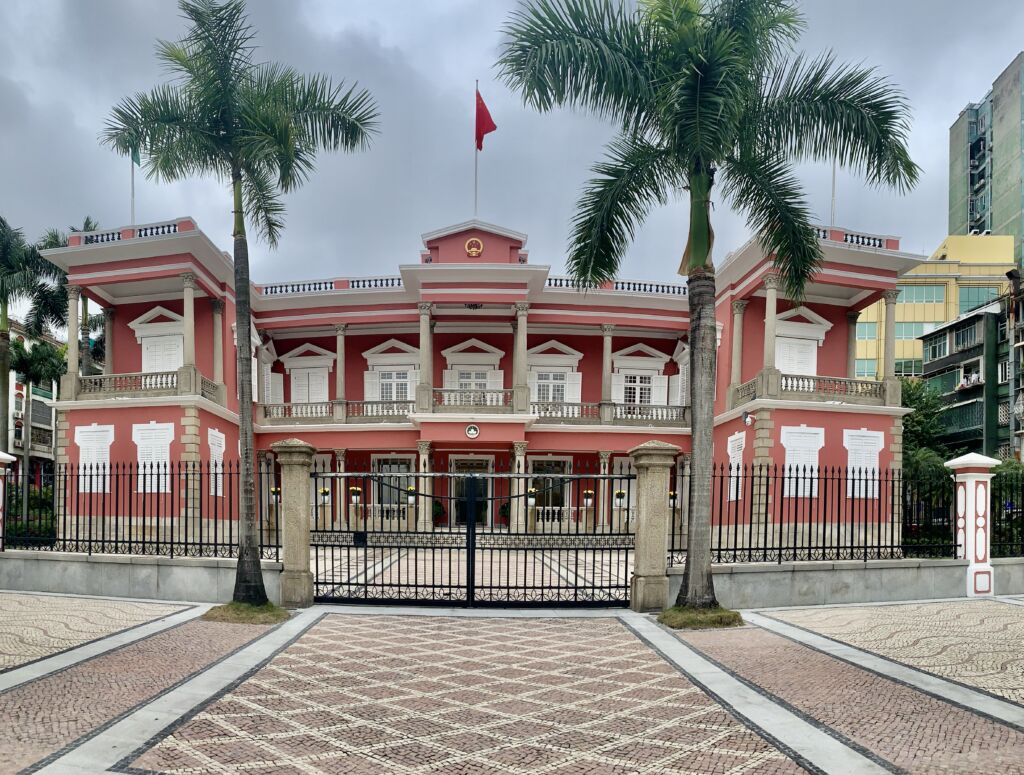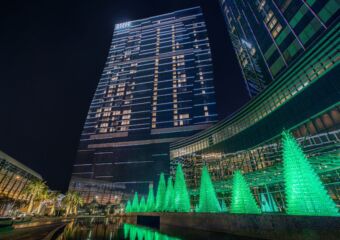Here, we take a look at one of the most important institutional buildings through the history of Macau, located on renowned Praia Grande Avenue. With a history dating back to the 19th century, this is one of Macau’s most emblematic structures: perspiring a vintage and museum-like vibe, stopping by this structure is a reminder of the incredible and rich culture that Macau holds.
The government headquarters, an imposing neoclassical construction facing Nam Van Lake, is the official seat of the chief executive of Macau and its government since 1999. It’s commonly known as the “governor’s house” (or pink house, since it’s painted in bright pink) due to the fact that it was the official seat of the governor of Macau during the Portuguese administration of the territory. However, it’s history goes way back and that is what we got into this article.
Governors & More
The building known as Praia Grande Palace was built in 1849 (or in 1859 according to other records found) and its first owner was the Baron of Cercal, Alexandrino António de Melo. In 1876, the palace started being rented and used as the Portuguese governors’ official address. It was later it was bought by the Portuguese government and used by several government departments until eventually it was exclusively used as the official residence for the Portuguese governors. Official data indicates that before the establishment of a Portuguese governor in Macau (which only happened in 1623), Leal Senado was the first and most important power in town. That was when both Santa Sancha Palace and the Government’s Palace became important sources.
Until the establishment of former Portuguese Tamagnini de Sousa Barbosa as the region’s representative, governors before him used to live between Santa Sancha and this palace–Tamagnini Barbosa was the proponent of governors living in Santa Sancha. The second Baron of Cercal even used the pink palace to host sumptuous parties. He was portrayed as a bohemian man.
There are many doubts regarding the true story of the design and construction of what is today the government headquarters. The project is commonly attributed to the Macanese architect José Agostinho Tomás de Aquino (1804–1852).
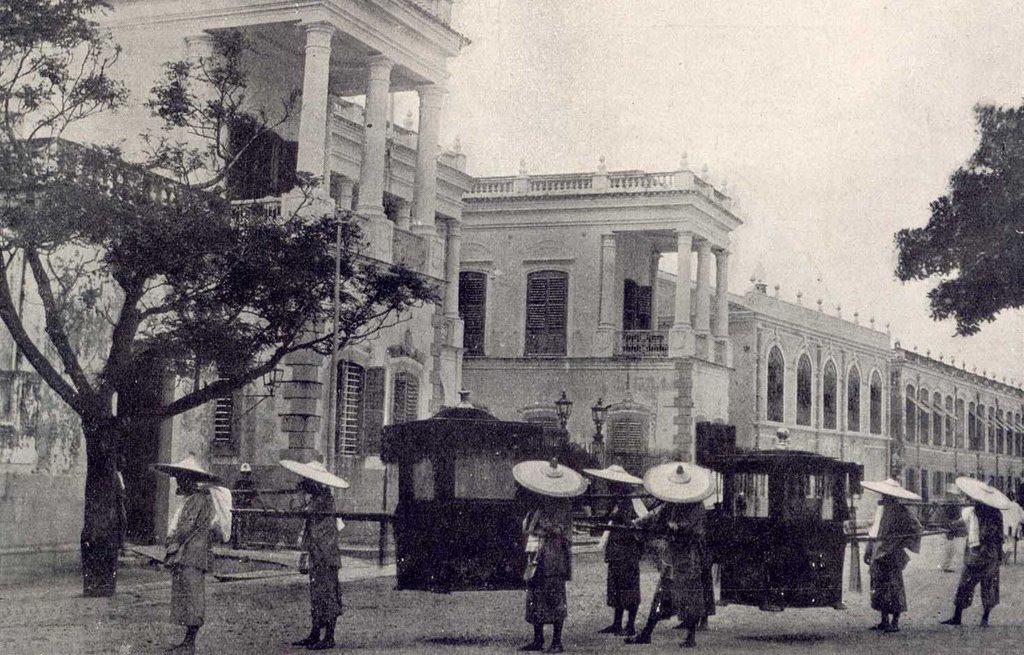
Government Palace, 1908. Source: Collection of the Lisbon Geographic Society
Renovate to Innovate
The building went through several renovations until the end of the first half of the 20th century; especially due to damages to the roof caused by a typhoon in 1924 and other government decisions throughout the years. Since then almost no big changes have been done to the property other than small repairs or conservation works.
“The current building is in a U shape, with two protruding external bodies with balconies and one other balcony along the entire front”. The architect used the neoclassical design, “as again can be seen in many other buildings in Macau from the end of the 19th century and the beginning of the 20th century especially noticed in the triangular pediments in the windows and balconies of the first floor”.
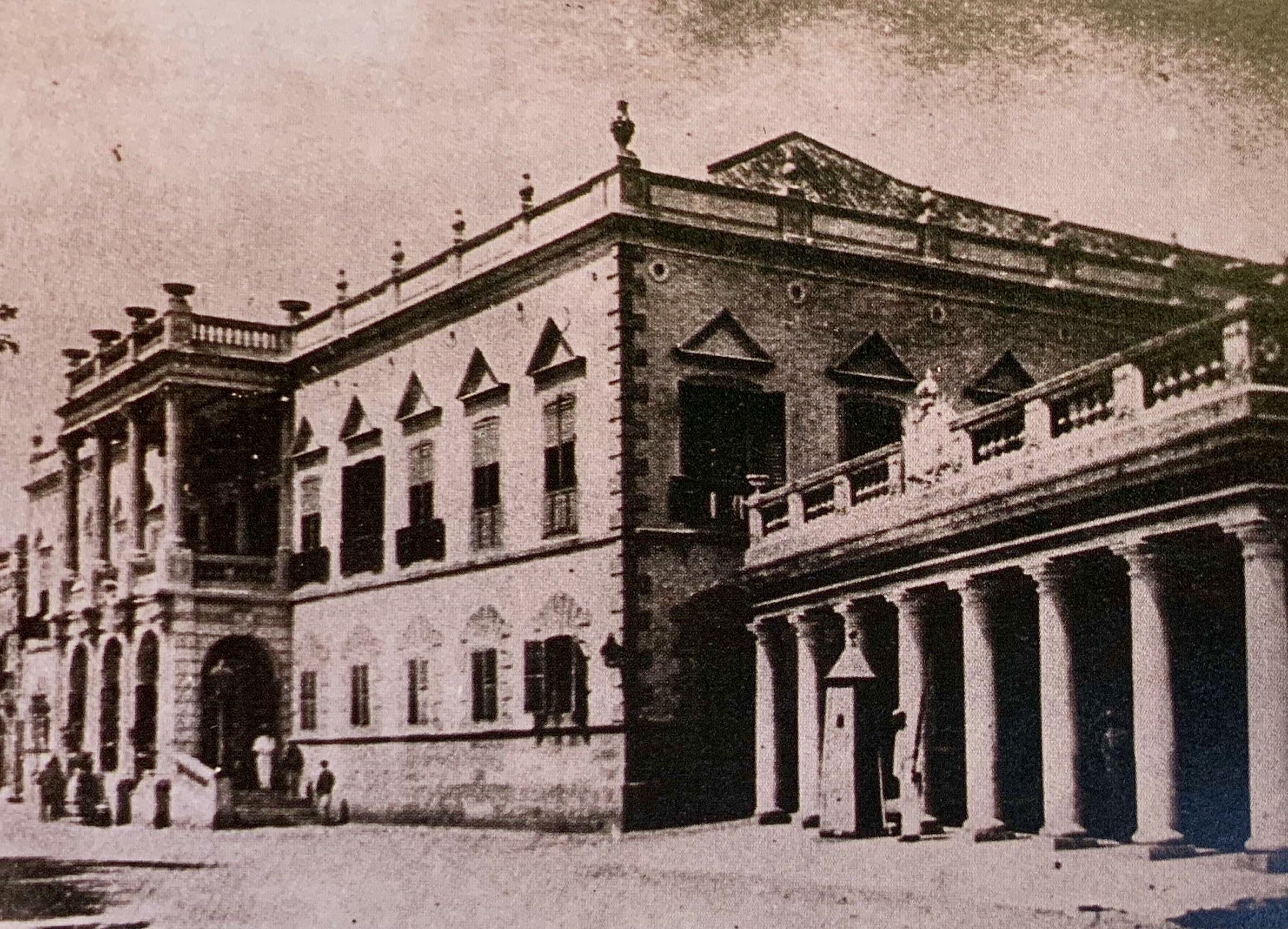
Source: Crolonogia da História de Macau, by Beatriz Basto da Silva
In 1983, the palace was completely refurbished. For those who didn’t have the chance to visit before, here is a hint of what was inside: at the back of the main building, a newer structure emerged to serve as offices for the deputy secretaries. The first floor was comprised of the governor’s cabinet, a Portraits’ Room–with the faces of all the 41 governors from the former century–and the Blue Room, decorated with tapestries, old Portuguese-style furniture, and Portuguese tiles as well.
It was built using typical brick masonry, plastered and painted in Pombaline pink. This pink tone is then mixed with the white that is used in some of the elements such as the windows, balustrades, cornices, and more. The Goverment Headquarters is open to the Macau public two times a year since 2001, allowing people a chance to visit some of the rooms inside and also the gardens.
Source: “A Urbanização e a Arquitectura dos Portugueses em Macau” by Pedro Dias; Wikipedia
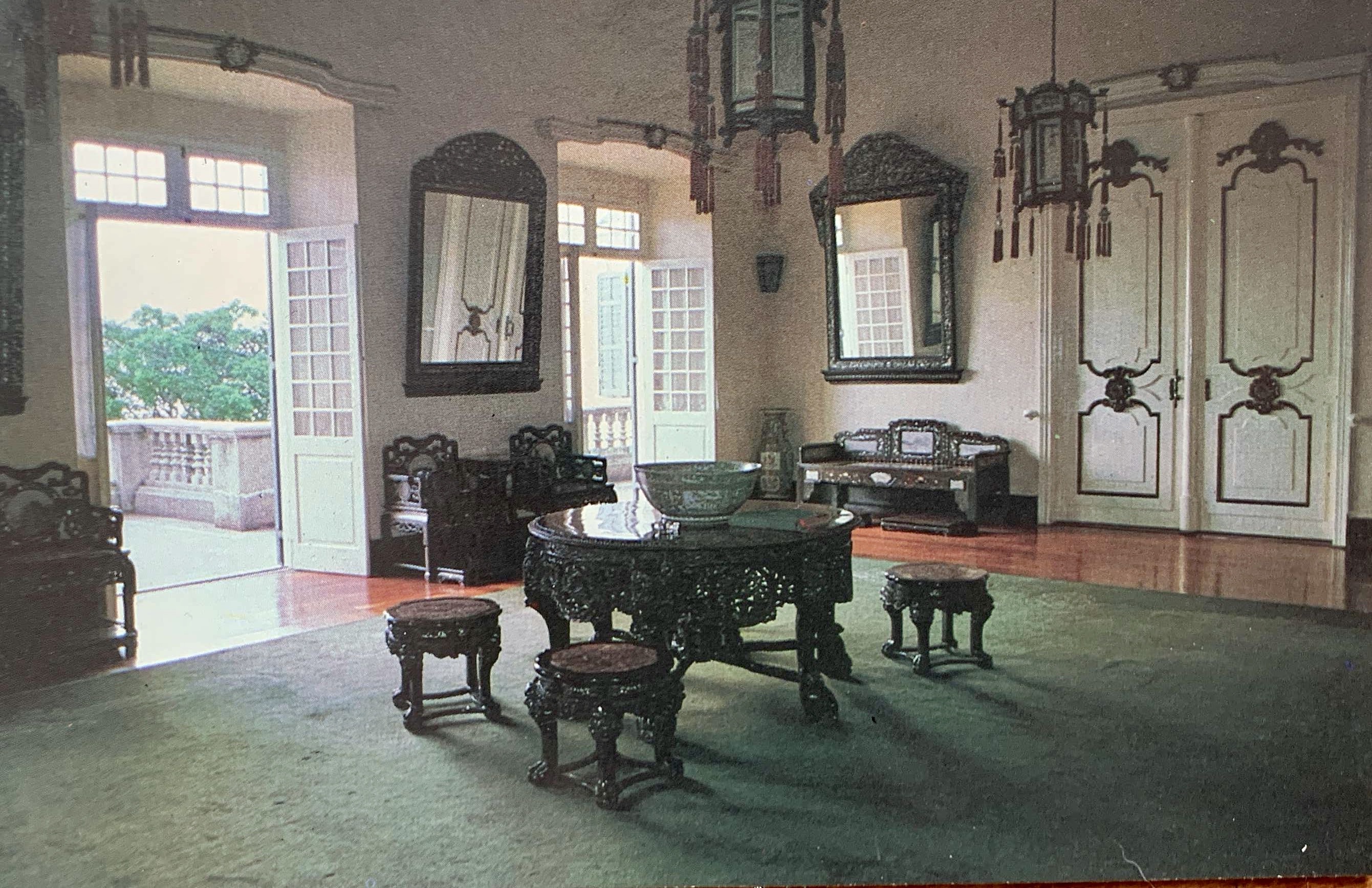
Source: ICM Commission for the Preservation of Macau Urban and Cultural Heritage
This article was originally written by Rui Barbosa in June 2017 and updated by Leonor Sá Machado in February 2020.
Government Headquarters 131 Avenida da Praia Grande, Macau, +853 2872 6886, www2.gcs.gov.mo/openday

